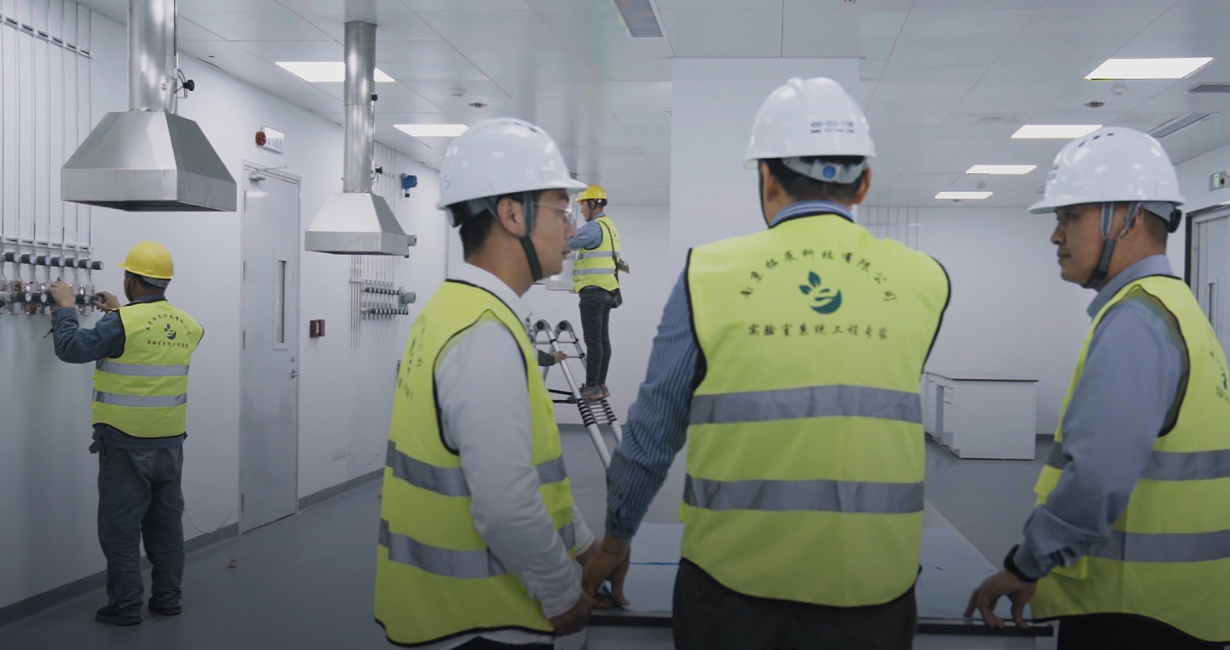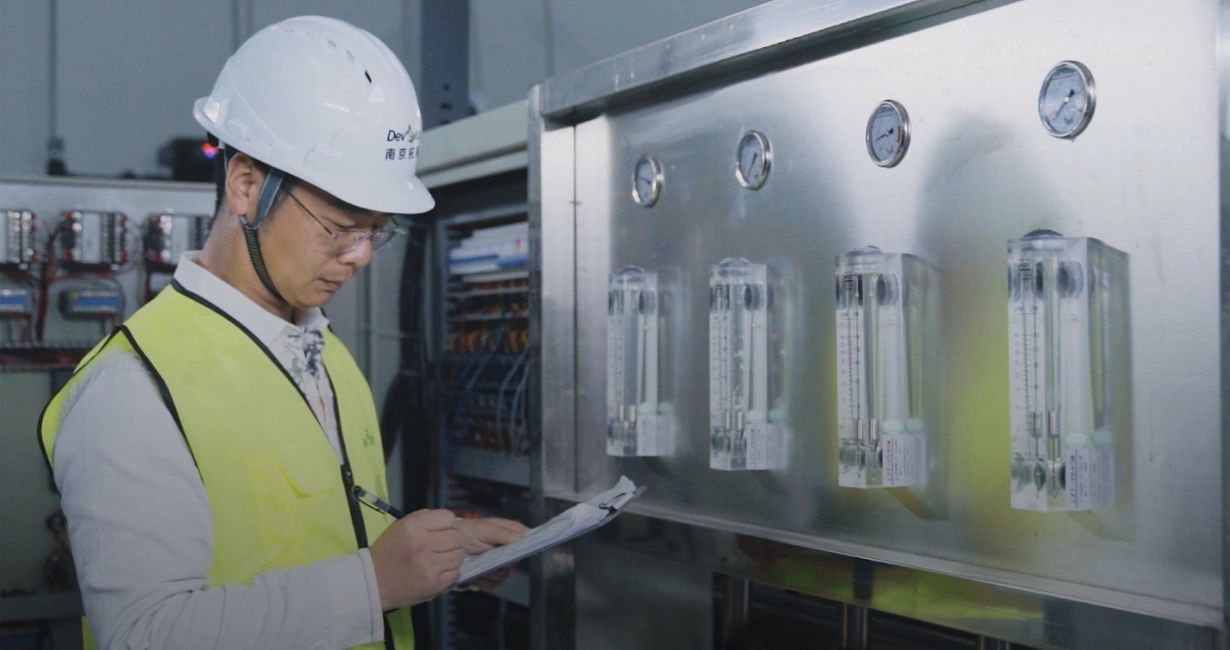Building a New Lab: A 7-Step Guide to Avoid 90% of the Pitfalls (From Consultation to Operation)
Release time:
2025-08-04 11:09
In today's rapidly developing scientific research, the construction of new laboratories has become an important measure for universities, research institutions, and enterprises to enhance their innovation capabilities. However, the construction of new laboratories is a systematic project, involving many professional aspects from the initial planning to the later operation and maintenance. Any negligence may lead to cost overruns, insufficient functionality, or even safety hazards. This article is provided by a professional laboratory construction service provider Nanjing Expansion Technology This article outlines the seven core stages in the entire process of building a new laboratory, combining industry experience to help you avoid common pitfalls and ensure the efficient implementation of new laboratory projects.
Stage One: Precise Consultation, Pinpointing Core Needs
The first step in building a new laboratory is to clarify core needs through professional consultation. Many units in the initial stage easily fall into the misconception of "equipment stacking," ignoring the matching degree between research goals and laboratory functions. At this time, it is necessary to conduct multiple rounds of research in conjunction with the research team, equipment management department, and professional institutions to clarify basic parameters such as experiment type, sample size, and personnel scale, and to predict future development needs for 3-5 years. Nanjing Expansion Technology With rich experience in this stage, its technical team will help customers sort out a needs list of "essential functions + flexible space" through on-site interviews and industry case analysis, avoiding frequent modifications later due to unclear needs.

Stage Two: Scientific Planning, Building a Functional Framework
Laboratory planning is the blueprint design of a new laboratory, directly determining the efficiency of space utilization and the rationality of experimental processes. The planning stage needs to focus on solving three major problems: First, plan the flow according to the experimental process, scientifically separating functional areas such as the reagent area, operation area, clean area, and hazardous waste area to reduce the risk of cross-contamination; second, plan the infrastructure layout based on equipment power, water and electricity needs, avoiding later pipeline modifications; third, reserve space for equipment upgrades and personnel expansion. Nanjing Expansion Technology's planning team is adept at customizing solutions based on the characteristics of different industries (such as biology, chemistry, and materials). The laboratory planning schemes designed for many universities have achieved a space utilization rate increase of over 30%.
Stage Three: Deepening Design, Refining Technical Standards
Laboratory design is the concrete implementation of the planning scheme, which needs to take into account standardization, safety, and humanization. The design stage must strictly follow national standards such as the "Laboratory Design Specifications," clarifying technical parameters such as cleanliness level, ventilation efficiency, and fire protection level. For example, chemical laboratories need to design explosion-proof fume hoods and corrosion-resistant floors, and biosafety laboratories need to design negative pressure systems according to the level. At the same time, the design scheme should incorporate humane details, such as reasonable operating table height, sufficient lighting, and convenient emergency shower devices. Nanjing Expansion Technology's design team has many registered designers who are familiar with the design standards of various industry laboratories and can transform the planning intentions into detailed drawings that can be constructed, ensuring that the design scheme passes the review of fire protection and environmental protection departments.
Stage Four: Standardized Construction, Controlling the Quality Baseline
Laboratory construction is the key link in transforming design drawings into entities, and its quality directly affects the safety and durability of the laboratory. The construction stage needs to focus on controlling material quality (such as corrosion-resistant plates, fire-retardant coatings), construction processes (such as pipeline sealing, ground leveling), and progress nodes. Especially in the construction of special areas such as clean rooms and constant temperature and humidity rooms, environmental parameter monitoring should be carried out throughout the process. Nanjing Expansion Technology has a professional construction team and a complete quality management system, effectively avoiding common construction problems such as wall seepage and short circuits.

Stage Five: Professional Installation, Ensuring Equipment Efficiency
Laboratory equipment installation is not simply "putting it in place," but requires precise adjustment based on equipment characteristics and experimental needs. Large instruments such as gas chromatographs and mass spectrometers have strict requirements for power stability and grounding resistance, and fume hoods and biosafety cabinets need to be tested for wind speed and airtightness. Improper operation during the installation stage may lead to a decrease in equipment accuracy or even damage. Nanjing Expansion Technology's equipment installation team has rich instrument service experience and can cooperate with equipment manufacturers to complete the entire process of installation, calibration, and trial operation, ensuring that the equipment can reach its optimal operating state after installation.
Stage Six: Strict Acceptance, Building a Safety Defense Line
Acceptance is the last hurdle before a new laboratory is put into use, and it needs to cover all dimensions, including function, safety, and environmental protection. The acceptance content includes: whether the laboratory planning and design have been implemented, whether the construction quality meets the standards, whether the equipment is operating normally, and whether the fire protection and environmental protection facilities comply with regulations. During the acceptance process, it is necessary to invite a third-party testing agency to conduct professional testing and issue an authoritative report. Nanjing Expansion Technology will assist customers in formulating a detailed acceptance list, organize multi-departmental joint acceptance, and provide improvement plans for the problems found to ensure that the laboratory passes the filing and acceptance of the local competent authorities.
Stage Seven: Long-term Operation and Maintenance, Extending the Life of the Laboratory
After the laboratory is put into use, operation and maintenance management directly affects its service life and operating efficiency. Operation and maintenance content includes regular equipment maintenance, ventilation system cleaning, water and electricity safety inspections, and hazardous waste disposal. Many units lack professional operation and maintenance teams, leading to frequent equipment failures and high energy consumption. Nanjing Expansion Technology's "laboratory full life cycle operation and maintenance service" uses an intelligent monitoring system to monitor laboratory environmental parameters in real time, combined with regular on-site services, to help customers reduce operation and maintenance costs and ensure the long-term stable operation of the laboratory.

Each stage of building a new laboratory is closely linked, and any omission in any stage may affect the overall effect. Choosing a professional institution like Nanjing Expansion Technology that has the ability to provide full-chain services including consultation, planning, design, construction, acceptance, and operation and maintenance can effectively integrate resources, avoid risks, and allow new laboratory projects to avoid 90% of detours, truly becoming a solid platform to support scientific research and innovation.
Related News



